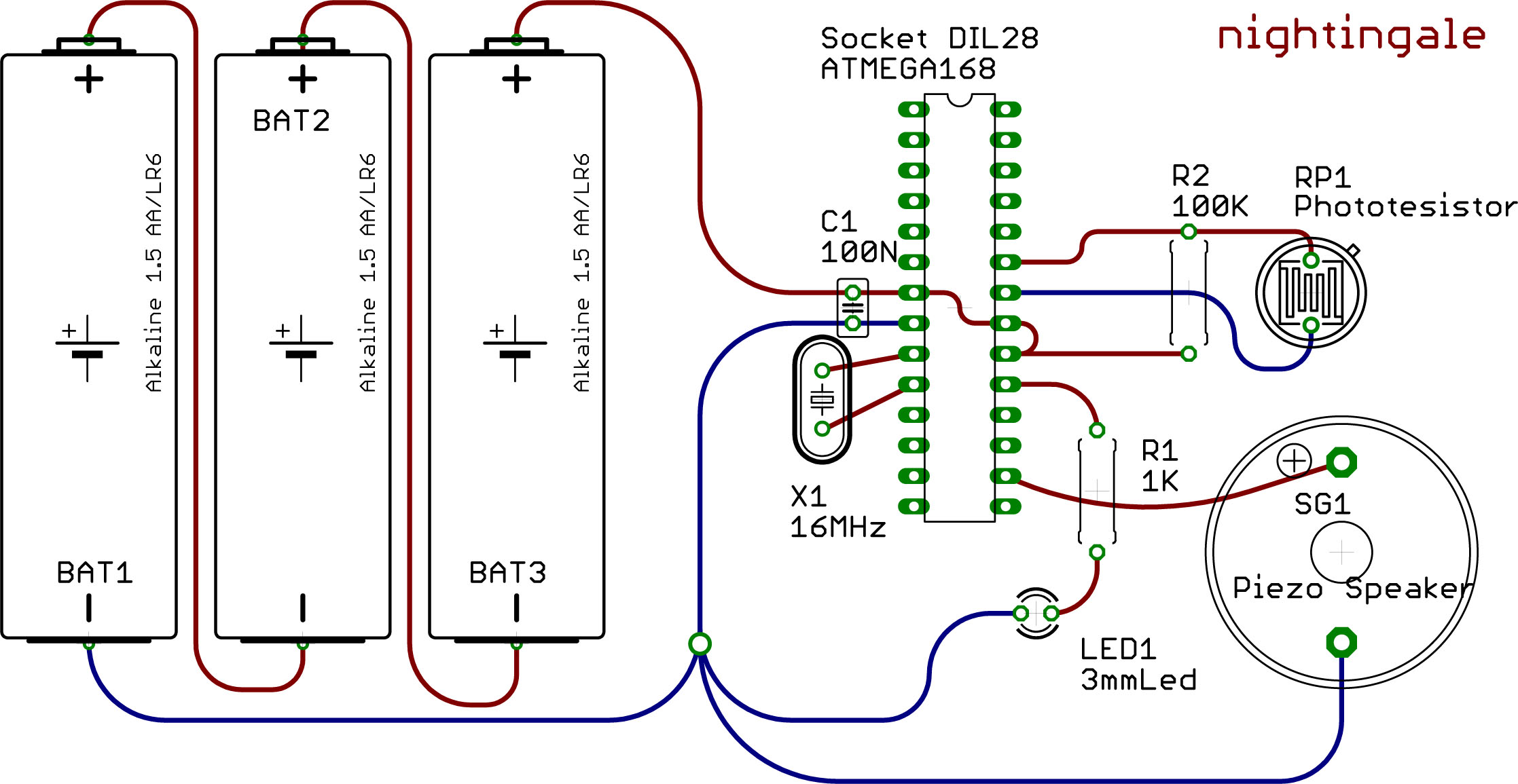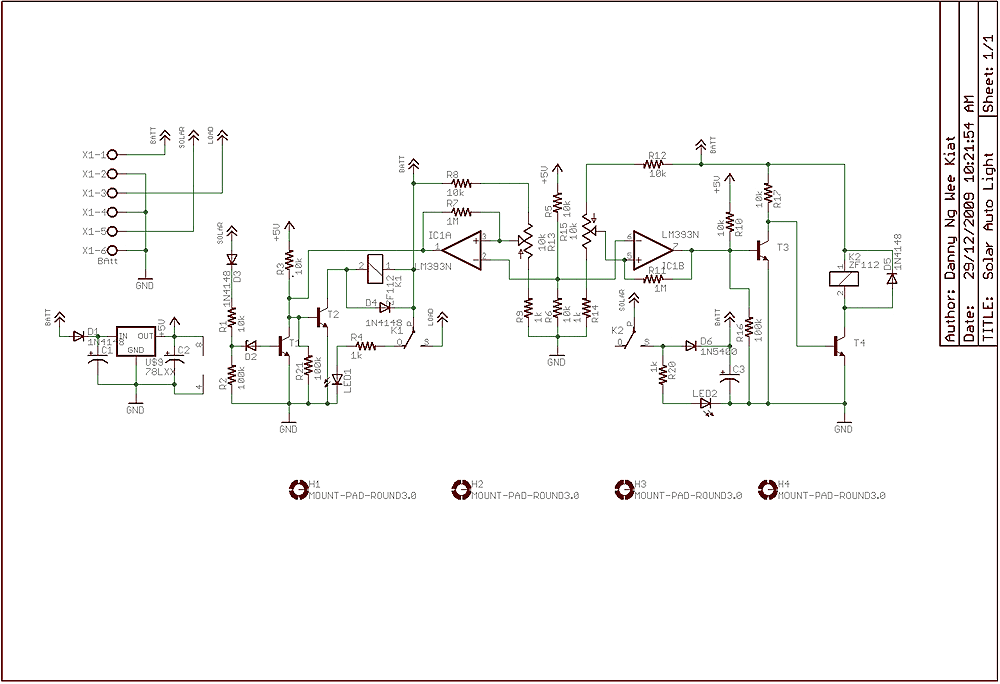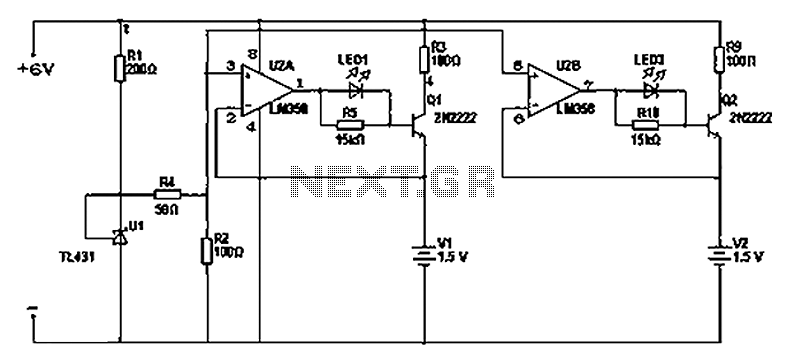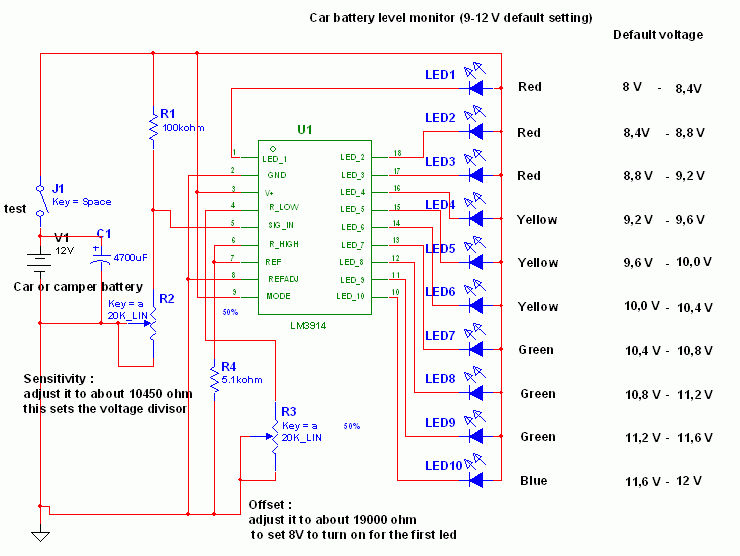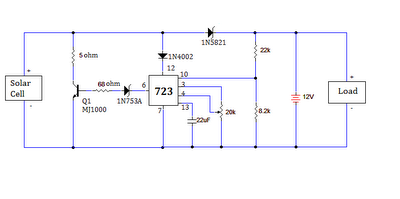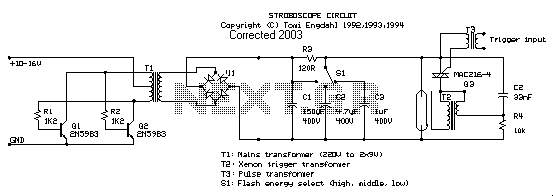
200mA/Hour & 12V NiCAD Battery Charger
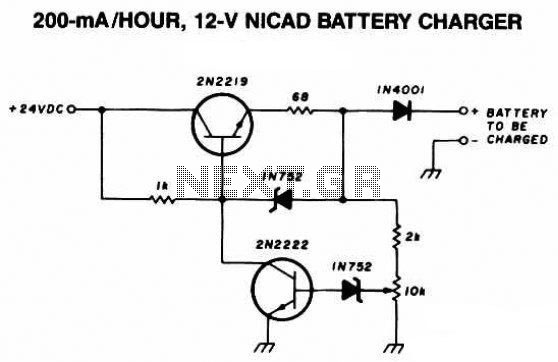
The following diagram is the schematic diagram of a 12V NiCAD battery charger with a charging rate of 200mA per hour. This NiCAD battery charger circuit charges the battery at 75 mA until the battery is fully charged, after which it reduces the current to a trickle.
The 12V NiCAD battery charger circuit is designed to efficiently charge nickel-cadmium (NiCAD) batteries while ensuring proper management of the charging process to extend battery life. The circuit typically includes a transformer, rectifier, voltage regulator, and current limiting components.
The transformer steps down the mains voltage to a suitable level for charging the 12V NiCAD battery. The rectifier converts the AC voltage from the transformer into pulsating DC voltage. A smoothing capacitor may be included to reduce the ripple in the DC output, providing a more stable voltage to the battery.
Current limiting is achieved through a resistor or a more sophisticated current regulator circuit, which initially allows a charging current of 75 mA. This initial charging phase is crucial for safely bringing the battery up to a full charge without overheating or damaging the cells. Once the battery reaches its full charge state, the circuit automatically reduces the current to a trickle charge, typically around 10% of the initial charging current, to maintain the battery's charge without overcharging.
Additional features may include a charge indicator LED to show when the charger is active and possibly a thermal cutoff or fuse for safety, preventing damage due to overheating. The overall design emphasizes reliability, efficiency, and safety, making it suitable for regular use in charging 12V NiCAD batteries.The following diagram is the schematic diagram of 12V NiCAD battery charger with charging rate of 200mA/Hour. This NiCAD battery charger circuit charges the battery at 75 mA until the battery is charged, then it reduces the current to a tri..
🔗 External reference
The 12V NiCAD battery charger circuit is designed to efficiently charge nickel-cadmium (NiCAD) batteries while ensuring proper management of the charging process to extend battery life. The circuit typically includes a transformer, rectifier, voltage regulator, and current limiting components.
The transformer steps down the mains voltage to a suitable level for charging the 12V NiCAD battery. The rectifier converts the AC voltage from the transformer into pulsating DC voltage. A smoothing capacitor may be included to reduce the ripple in the DC output, providing a more stable voltage to the battery.
Current limiting is achieved through a resistor or a more sophisticated current regulator circuit, which initially allows a charging current of 75 mA. This initial charging phase is crucial for safely bringing the battery up to a full charge without overheating or damaging the cells. Once the battery reaches its full charge state, the circuit automatically reduces the current to a trickle charge, typically around 10% of the initial charging current, to maintain the battery's charge without overcharging.
Additional features may include a charge indicator LED to show when the charger is active and possibly a thermal cutoff or fuse for safety, preventing damage due to overheating. The overall design emphasizes reliability, efficiency, and safety, making it suitable for regular use in charging 12V NiCAD batteries.The following diagram is the schematic diagram of 12V NiCAD battery charger with charging rate of 200mA/Hour. This NiCAD battery charger circuit charges the battery at 75 mA until the battery is charged, then it reduces the current to a tri..
🔗 External reference
Warning: include(partials/cookie-banner.php): Failed to open stream: Permission denied in /var/www/html/nextgr/view-circuit.php on line 713
Warning: include(): Failed opening 'partials/cookie-banner.php' for inclusion (include_path='.:/usr/share/php') in /var/www/html/nextgr/view-circuit.php on line 713
